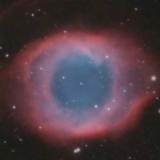INDI Library v2.0.7 is Released (01 Apr 2024)
Bi-monthly release with minor bug fixes and improvements
AstroPi3 Scripts revised
Replied by Andrew on topic AstroPi3 Scripts revised
Please Log in or Create an account to join the conversation.
- Rob Lancaster
-
 Topic Author
Topic Author
- Offline
- Supernova Explorer
-

- Posts: 2877
- Thank you received: 812
Replied by Rob Lancaster on topic AstroPi3 Scripts revised
Please Log in or Create an account to join the conversation.
Replied by Jean-Luc on topic AstroPi3 Scripts revised
Back to my remark about missing /boot/config.txt, I found here that
If you need to apply some of the config settings below, but you don't have a config.txt on your boot partition yet, then simply create it as a new text file.Nice. That answears the question I was asking me about what would happen if I created such a file.
OK, maybe was it obvious for many here, but... newbie with RPI, newbie with INDI/Kstars/etc., and... what else ?
Please Log in or Create an account to join the conversation.
- Rob Lancaster
-
 Topic Author
Topic Author
- Offline
- Supernova Explorer
-

- Posts: 2877
- Thank you received: 812
Replied by Rob Lancaster on topic AstroPi3 Scripts revised
Please Log in or Create an account to join the conversation.
Replied by Jean-Luc on topic AstroPi3 Scripts revised
I thought I had found the graal, but alas not.
Creating the file into the /boot/ directory did nothing at all. I digged deeper, and found that in fact it lies into /boot/firmware.
Before finding your project, I had been struggling with two other ones that I abandonned due to too much hassle setting them.
One of them I still have the card, and as I inserted it in my linux box I could access the /boot/ and found the config.txt file there.
This has been built on a RPI3 with an old distro whereas astroPi3 has been built on a RPI4 with the most recent distro.
So, things must have evolved and some files must have moved to new locations due to some improvement.
However, though I added the following lines to the file, it did not change anything :
<code>hdmi_force_hotplug=1
hdmi_group=2
hdmi_mode=82</code>
My intent was to get a 1920x1080 display with vnc access with no monitor attached.
I could find as well that, though there is no config.txt into the /boot folder, it contains two config files nammed respectively config-5.15.0-1029-raspi and config-5.15.0-1030-raspi, that contain many information.
I am still digging, and will report if I find something useful.
Rgrds,
Please Log in or Create an account to join the conversation.
- Rob Lancaster
-
 Topic Author
Topic Author
- Offline
- Supernova Explorer
-

- Posts: 2877
- Thank you received: 812
Replied by Rob Lancaster on topic AstroPi3 Scripts revised
The annoying thing is that these are pretty important functions or settings for a computer you plan to make headless and still access via VNC. It would be nice if there were a standard way to set these parameters that will always work.
Please Log in or Create an account to join the conversation.
- Petar Milevski
-

- Offline
- Premium Member
-

- Posts: 152
- Thank you received: 28
Replied by Petar Milevski on topic AstroPi3 Scripts revised
Please Log in or Create an account to join the conversation.
- Rob Lancaster
-
 Topic Author
Topic Author
- Offline
- Supernova Explorer
-

- Posts: 2877
- Thank you received: 812
Replied by Rob Lancaster on topic AstroPi3 Scripts revised
Please Log in or Create an account to join the conversation.
- Petar Milevski
-

- Offline
- Premium Member
-

- Posts: 152
- Thank you received: 28
Replied by Petar Milevski on topic AstroPi3 Scripts revised
You just have to remember to rename that xorg.conf file so it doesn't take effect when you want a monitor or use a mini HDMI dongle instead to trick it
Please Log in or Create an account to join the conversation.
- Rob Lancaster
-
 Topic Author
Topic Author
- Offline
- Supernova Explorer
-

- Posts: 2877
- Thank you received: 812
Replied by Rob Lancaster on topic AstroPi3 Scripts revised
Please Log in or Create an account to join the conversation.
- Rob Lancaster
-
 Topic Author
Topic Author
- Offline
- Supernova Explorer
-

- Posts: 2877
- Thank you received: 812
Replied by Rob Lancaster on topic AstroPi3 Scripts revised
Please Log in or Create an account to join the conversation.
- Petar Milevski
-

- Offline
- Premium Member
-

- Posts: 152
- Thank you received: 28
Replied by Petar Milevski on topic AstroPi3 Scripts revised
Yes its not easy. Many a night tearing out my hair to figure that one out
Please Log in or Create an account to join the conversation.

